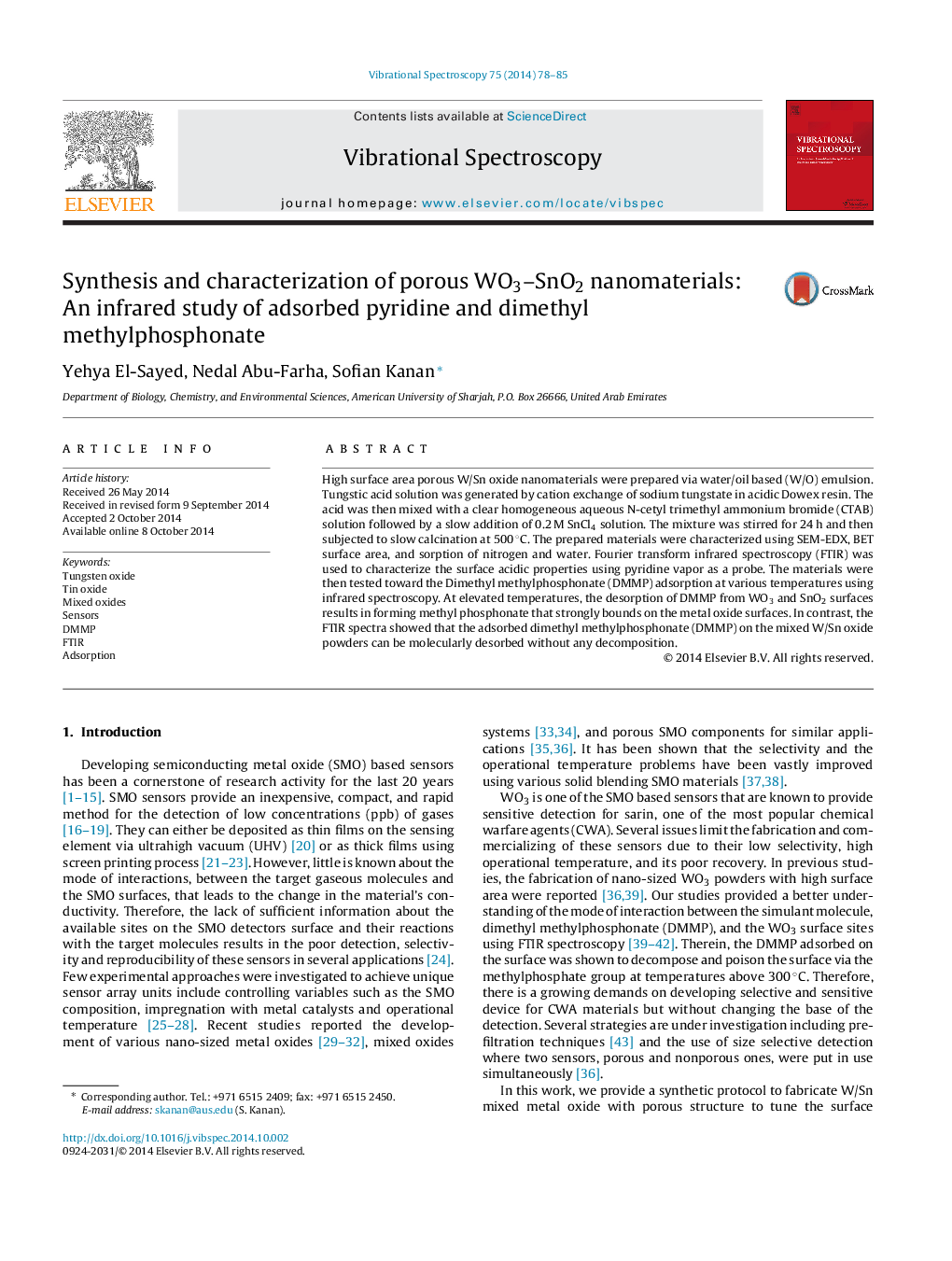| Article ID | Journal | Published Year | Pages | File Type |
|---|---|---|---|---|
| 1249877 | Vibrational Spectroscopy | 2014 | 8 Pages |
•High surface area porous W/Sn oxides were fabricated using sol–gel method.•FTIR spectroscopy was used to characterize the surface using pyridine vapor as a probe.•Adsorbed DMMP on WO3 and SnO2 tend to decompose at 300 °C.•Adsorbed DMMP on the mixed W/Sn oxide nanomaterials can be molecularly desorbed at high temperature without decomposition.
High surface area porous W/Sn oxide nanomaterials were prepared via water/oil based (W/O) emulsion. Tungstic acid solution was generated by cation exchange of sodium tungstate in acidic Dowex resin. The acid was then mixed with a clear homogeneous aqueous N-cetyl trimethyl ammonium bromide (CTAB) solution followed by a slow addition of 0.2 M SnCl4 solution. The mixture was stirred for 24 h and then subjected to slow calcination at 500 °C. The prepared materials were characterized using SEM-EDX, BET surface area, and sorption of nitrogen and water. Fourier transform infrared spectroscopy (FTIR) was used to characterize the surface acidic properties using pyridine vapor as a probe. The materials were then tested toward the Dimethyl methylphosphonate (DMMP) adsorption at various temperatures using infrared spectroscopy. At elevated temperatures, the desorption of DMMP from WO3 and SnO2 surfaces results in forming methyl phosphonate that strongly bounds on the metal oxide surfaces. In contrast, the FTIR spectra showed that the adsorbed dimethyl methylphosphonate (DMMP) on the mixed W/Sn oxide powders can be molecularly desorbed without any decomposition.
